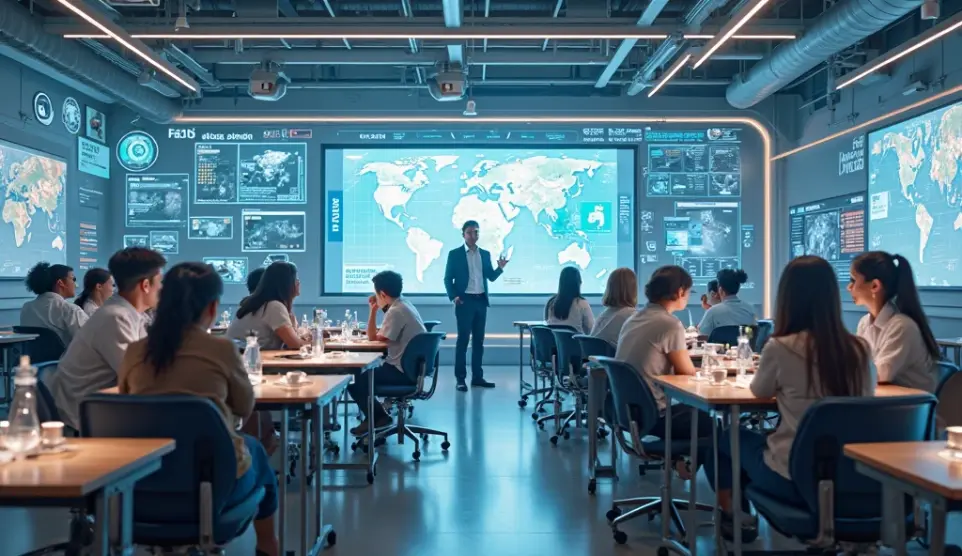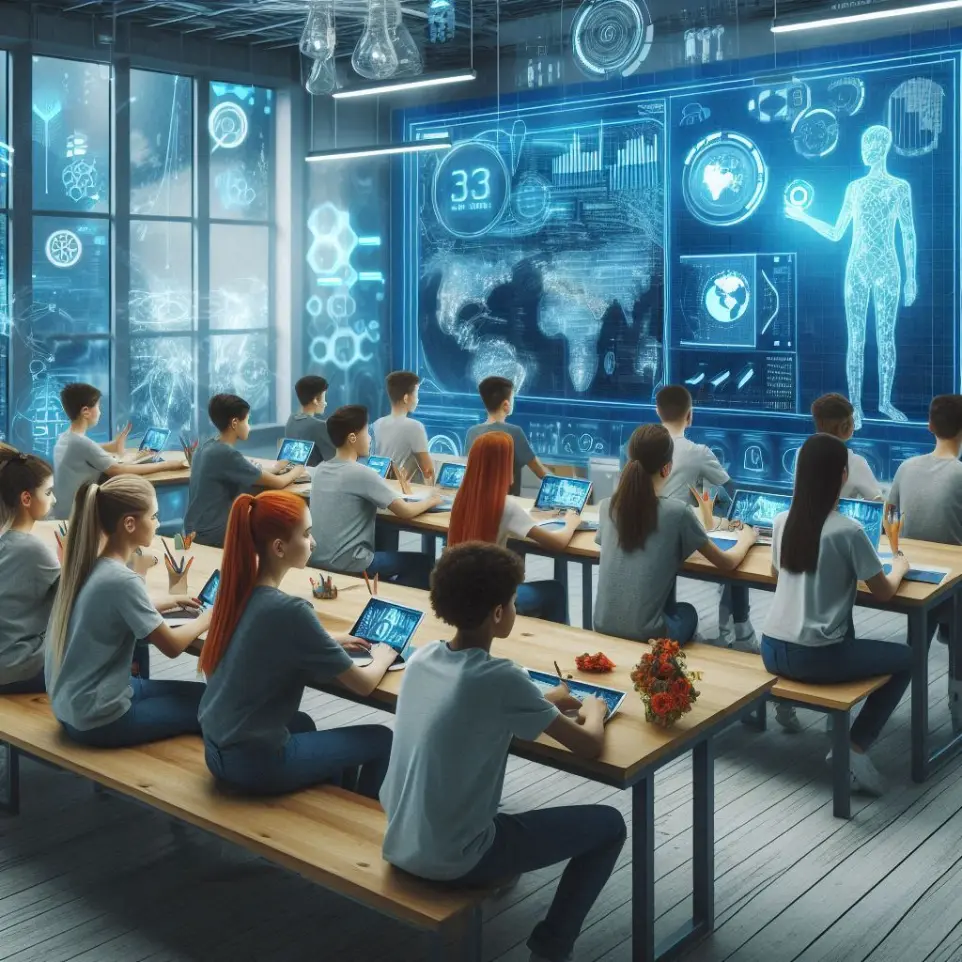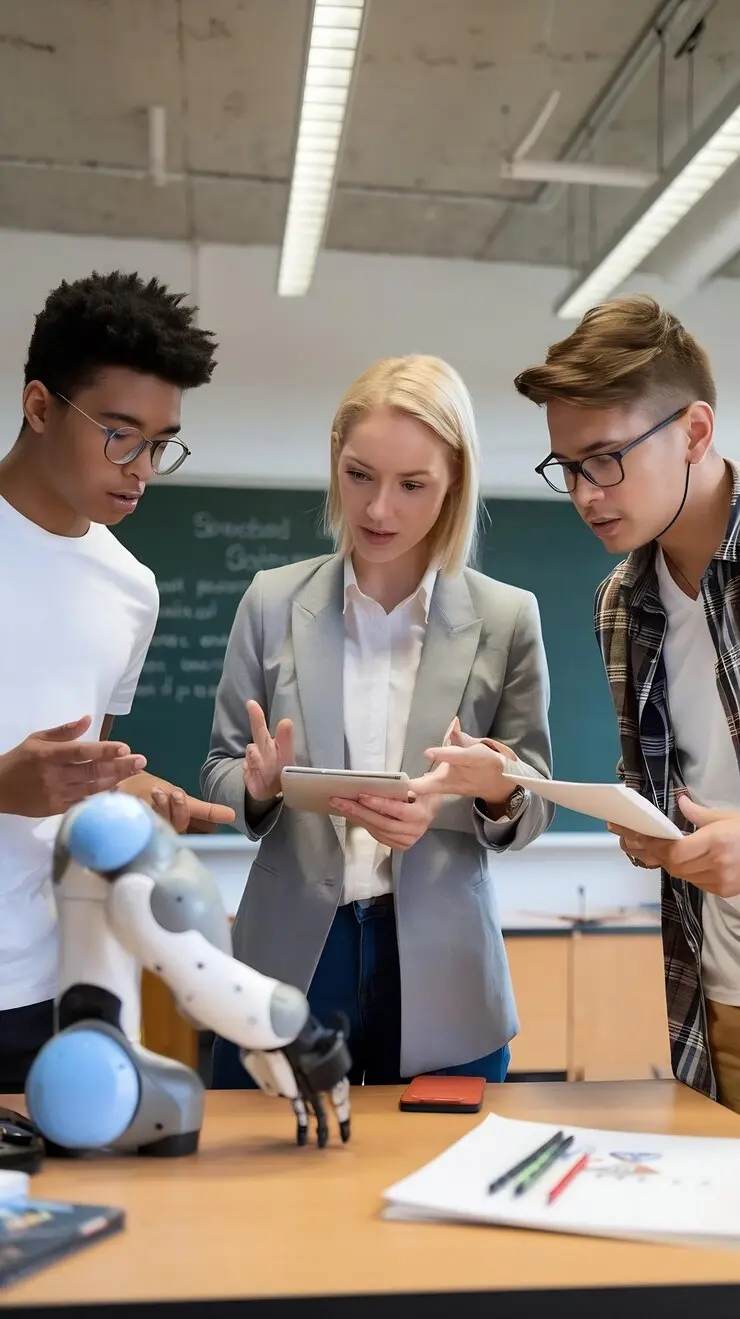In our latest article, "Educating for the Future: Preparing Students for Jobs That Don't Yet Exist," we'll discover how education is adapting to train the professionals of tomorrow. Are you ready to delve into the exciting world of preparing students for future jobs? Read on and discover how technology is transforming education!
Introduction
Emerging technologies, such as artificial intelligence, automation, and data analytics, are rapidly transforming the job landscape. According to the World Economic Forum, it is estimated that by 2025, 85% of companies will adopt artificial intelligence at some level in their operations. This technological shift is redefining the nature of work and creating new job opportunities that require specialized skills.
Automation is replacing routine tasks, which means workers must adapt and acquire more complex and creative skills. Furthermore, the demand for skills in fields such as programming, cybersecurity, and data management is on the rise. These trends are leading to the creation of jobs that didn't even exist a decade ago, underscoring the importance of preparing students for an ever-evolving future of work.
Training in soft skills, such as critical thinking, problem-solving, and creativity, is also crucial in a work environment that values adaptability and innovation. In this sense, education plays a fundamental role in preparing students for the jobs of the future.
Education plays an essential role in preparing students for future jobs. It is critical that education systems adapt to cultivate the skills needed for the ever-changing labor market. The ability to learn continuously, adapt to new technologies, and work in collaborative environments are increasingly valued competencies in the workforce.
Furthermore, equity in education is crucial to ensure that all students have access to learning opportunities related to emerging technologies. Promoting diversity and inclusion in education can contribute to the development of a more innovative and adaptable workforce.
Educational programs should also focus on developing digital skills from an early age, preparing students to understand and use technological tools effectively. Collaboration between educational institutions, businesses, and government agencies is essential to design programs that address current and future labor market needs.
Technology plays a central role in the education of the future, as it can improve the accessibility, personalization, and effectiveness of learning. Online learning platforms, virtual reality tools, and artificial intelligence systems have the potential to transform the way students acquire knowledge and skills.
Integrating technology into the classroom can foster collaboration, creativity, and critical thinking. Furthermore, digital tools can be tailored to individual students' needs, providing a more personalized approach to learning. As emerging technologies continue to evolve, it is critical that educators are prepared to effectively integrate these tools into their teaching practices.
Education plays a crucial role in preparing students for future jobs, and effectively integrating technology into educational systems can be instrumental in ensuring students acquire the skills needed to thrive in an ever-changing job market.

Emerging Technologies and Their Impact on Education
Today, education faces the challenge of preparing students for jobs that don't yet exist, and to achieve this, it is essential to explore and leverage emerging technologies. Artificial intelligence (AI) and machine learning are highly relevant areas in this context, as they offer new opportunities to optimize teaching and learning.
Artificial intelligence, through algorithms and machine learning systems, allows for the personalization of each student's educational experience, identifying their strengths and weaknesses and adapting content individually. Furthermore, AI can facilitate the creation of inclusive learning environments, providing personalized support to students with special needs or different learning styles.
On the other hand, virtual reality (VR) and augmented reality (AR) are transforming the traditional classroom into an immersive and highly interactive space. These technologies offer the ability to immerse students in virtual environments that simulate real-world experiences, which is especially beneficial for disciplines such as geography, history, and science, where visualization and spatial contextualization are essential for a deep understanding of concepts.
The integration of virtual and augmented reality in education not only promotes active student engagement but also stimulates their creativity and problem-solving skills, while encouraging collaborative work in shared virtual environments.
Finally, the Internet of Things (IoT) offers opportunities to transform educational spaces into smart, interconnected environments. From interactive whiteboards to devices that monitor student performance, the IoT can provide valuable data that helps educators better understand each student's individual needs and optimize their teaching strategies.
The application of IoT in education not only allows for more efficient resource management but also offers the possibility of creating contextualized learning experiences where students can interact with the physical environment in a meaningful way, facilitating deeper and more practical understanding and assimilation of concepts.
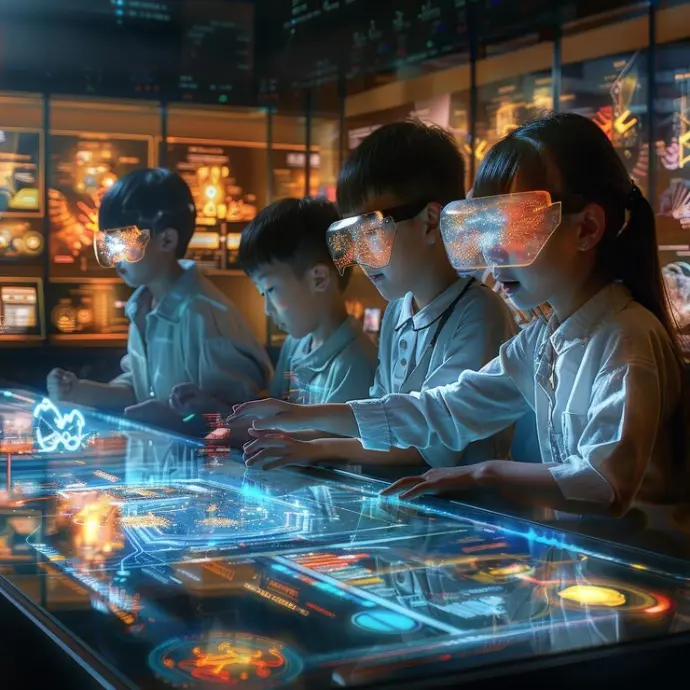
Blockchain technology, primarily known for supporting cryptocurrencies, is beginning to have a significant impact on education. Blockchain's main feature is its ability to create immutable and transparent records, making it ideal for verifying academic credentials, certificates, and degrees. This means that students will be able to have a secure and verifiable educational history, which in turn can simplify the university admissions process and job search.
Furthermore, blockchain can also facilitate the creation and distribution of educational content, as it allows for the creation of smart contracts that automate payments for online courses, study materials, and other resources. This could benefit students by reducing costs and increasing accessibility to quality education. Likewise, the transparency and security offered by blockchain can help combat academic fraud and improve the integrity of the education system overall.
Blockchain technology has the potential to revolutionize the way educational credentials are managed, the distribution of educational content, and security in the academic field. By preparing students to work in a world where this technology is increasingly relevant, educational institutions can ensure their graduates are equipped with the skills needed to succeed in future jobs.
Preparing Students for Future Jobs
In the education of the future, the development of both soft and technical skills is essential. Soft skills, such as effective communication, teamwork, conflict resolution, and critical thinking, are essential for success in any work environment. On the other hand, technical skills, such as programming, data analysis, graphic design, and cybersecurity, are increasingly in demand in today's digital economy. It is crucial that students acquire a balance of these skills to be prepared for the jobs of the future.
Soft skills foster collaboration, empathy, and adaptability, while technical skills enable students to understand and use the digital and technological tools that will be indispensable in the emerging job market. This combination of skills will give students a competitive advantage in an ever-evolving work environment.
It is important that educational institutions and vocational training programs recognize the importance of balancing the development of soft and technical skills to prepare students for future job market challenges.
A focus on problem-solving and critical thinking is essential to preparing students for future jobs. Rather than simply memorizing facts and data, students must learn to analyze complex problems, think critically, question assumptions, and develop innovative solutions.
An emphasis on problem-solving fosters creativity, the ability to find effective solutions, and adaptability to changing situations. Employers of the future will value professionals who can creatively address challenges and propose original solutions.
Critical thinking, meanwhile, enables students to objectively evaluate information, identify biases, and make informed decisions. These skills will be essential in a world where the amount of information available is overwhelming, and the ability to discern the validity and relevance of information will be crucial to career success.
Adaptability and flexibility are essential attributes for the jobs of the future. As technology and the economy evolve, job roles also transform. Students must be prepared to adapt to new work environments, learn new skills, and take on different responsibilities throughout their careers.
It is essential that future education foster a growth mindset, curiosity, and a willingness to face unknown challenges. Students who can quickly adapt to change and maintain a positive attitude toward evolving work environments will be better prepared to succeed in the jobs of the future.
Furthermore, the flexibility to work in multidisciplinary teams, take on diverse roles, and collaborate with colleagues from different backgrounds will be an increasingly common requirement in the labor market. Students who develop these skills during their education will be well positioned to face the challenges of future jobs.
Creativity and innovation-oriented education is essential to preparing students for future jobs. In a constantly evolving world, it is crucial for students to develop skills to adapt to new challenges and find creative solutions. Emerging technologies are transforming the way we work and live, so it is essential to foster creativity and innovative skills from an early age.
Integrating technology into the classroom can provide powerful tools to foster creativity and innovation. The use of digital applications and platforms can allow students to interactively explore ideas, collaborate on creative projects, and develop problem-solving skills. Furthermore, creativity and innovation-oriented education can foster a proactive approach to lifelong learning, preparing students to face the changing challenges of the labor market.
Furthermore, it is important for educators to foster an environment that encourages experimentation and critical thinking. Providing opportunities for students to explore their interests, develop innovative projects, and take controlled risks can help cultivate an entrepreneurial mindset and confidence in their abilities. In this way, education focused on creativity and innovation can prepare students for future jobs that will require adaptability, originality, and the ability to find innovative solutions.
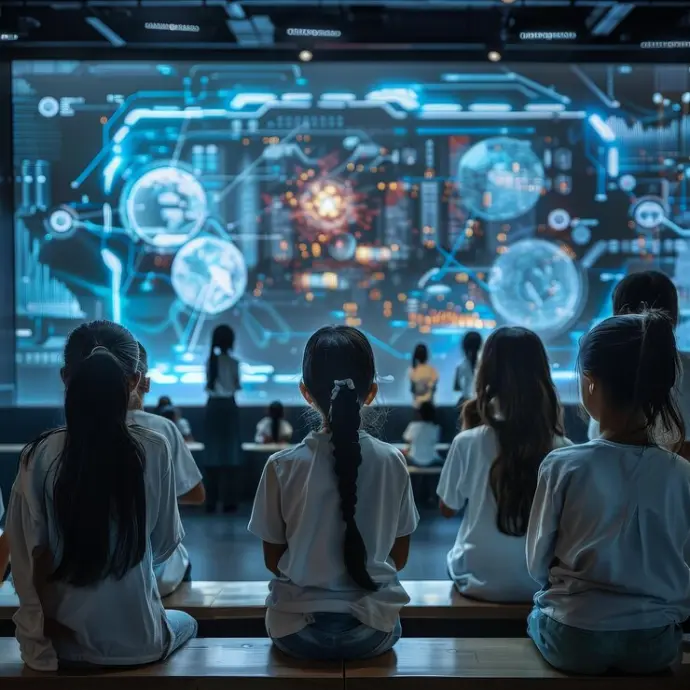
Trends in Future Education
Today, technology is transforming the way students learn and educators teach. One of the most significant trends in future education is the personalization of learning through technology. This approach seeks to tailor teaching to each student's individual needs, using digital tools that offer customized educational content, adaptive assessments, and real-time progress tracking.
Learning personalization also allows students to progress at their own pace, focusing on areas where they need more support and delving deeper into topics they find most interesting. Furthermore, technology facilitates the collection of data on student performance, allowing educators to adjust their teaching approaches to maximize each student's learning.
This evolution in education not only prepares students for future jobs that will require specific skills, but also encourages a more individualized and effective approach to learning.
Another important trend in future education is the promotion of global collaboration and networked learning. Technology has broken down geographical barriers and created unprecedented opportunities for students to connect with their peers around the world. Online learning platforms, virtual exchange programs, and collaborative online projects are just some of the ways students can engage in global learning experiences.
This global collaboration not only enriches the educational experience by exposing students to different cultural perspectives but also provides them with the opportunity to develop communication, collaboration, and problem-solving skills in a globalized environment. These skills are critical to preparing students for future jobs where collaboration and global connectivity will be essential.
Furthermore, online learning fosters the development of an open mind and the ability to adapt to diverse environments, preparing students to face the challenges and opportunities of an increasingly globalized labor market.
In the context of a rapidly changing world with growing environmental and social challenges, the education of the future also focuses on fostering sustainability and social responsibility. Technology is becoming a powerful tool for raising awareness among students about issues related to the environment, social justice, and civic responsibility.
Technological advancements allow educators to integrate sustainability and social responsibility themes into the curriculum, using digital resources, simulations, and visualization tools to address complex topics in an interactive and meaningful way. This not only prepares students to understand and address the challenges of the future, but also motivates them to become agents of positive change in their communities and the world around them.
By focusing on sustainability and social responsibility, the education of the future seeks to develop students who are not only prepared for the jobs of tomorrow, but also engaged citizens who are aware of their impact on the world around them.
Challenges and Opportunities for the Education of the Future
In the digital age, equity and access to technology education have become crucial issues. As we move toward an increasingly digitalized world, it is essential to ensure that all students have the opportunity to acquire technological skills. The digital divide is a reality that affects many communities, limiting access to educational resources and learning opportunities in the technological field. It is imperative that educational systems implement measures to provide equitable access to technology education, ensuring that no student is left behind due to resource or infrastructure limitations.
Equity in technology education not only involves access to devices and connectivity, but also the creation of inclusive educational programs that encourage the participation of all students, regardless of their socioeconomic background or geographic location. Initiatives to close the digital divide must address not only the availability of hardware and connectivity, but also the training of teachers in the effective implementation of educational technologies and the adaptation of curricula to meaningfully integrate digital skills into the learning process.
Promoting equity and access to technological education is essential to preparing students for the jobs of the future, as it provides them with the necessary tools to thrive in an ever-evolving digital economy.
With the increasing use of digital educational environments, there is a pressing need to address data security and protection in the educational setting. The collection and handling of students' personal and academic data poses significant challenges in terms of privacy and security. It is critical to establish strict cybersecurity and data protection measures to safeguard students' sensitive information and ensure a safe digital educational environment.
Education systems must implement clear policies and procedures for secure data management, as well as provide training and awareness-raising on safe online practices for both students and teachers. Furthermore, it is crucial to adopt advanced cybersecurity technologies and tools to protect educational systems from cyberattacks and security threats.
Data protection in digital educational environments is not only a matter of regulatory compliance, but also a fundamental aspect of building confidence among students, parents, and guardians in the use of educational technologies. By proactively addressing data security and protection, educational institutions can create a safe and secure digital learning environment that prepares students to navigate a hyperconnected world, while also being mindful of the importance of protecting their personal and academic information.
Preparing teachers for teaching emerging technologies is a fundamental element in the education of the future. Educators play a crucial role in training and guiding students toward the acquisition of relevant technological skills. It is essential to provide professional development opportunities for teachers, giving them the training and tools necessary to effectively integrate emerging technologies into their teaching practices.
Teacher training in emerging technologies encompasses not only technical mastery of digital tools and platforms, but also the ability to foster digital literacy, critical thinking, and problem-solving among students. Professional development programs for teachers should focus on the practical application of emerging technologies in the classroom, as well as the evaluation and adaptation of educational strategies based on feedback and data analysis obtained through digital platforms.
Furthermore, it is essential to foster a continuous learning mindset among teachers, as emerging technologies evolve rapidly and require constant updating of skills and knowledge. Preparing teachers to teach emerging technologies not only benefits educators in their professional practice but also has a significant impact on preparing students for the jobs of the future, equipping them with the skills needed to thrive in a work environment driven by technological innovation.
Conclusions
Education plays a critical role in preparing students for the jobs of the future. It is important that educational institutions focus on developing skills such as critical thinking, problem-solving, creativity, and collaboration, rather than focusing solely on memorizing facts. The jobs of the future will require an adaptable mindset and strong technical and soft skills, so education must evolve to meet these demands.
Educators have a responsibility to foster a learning environment that promotes curiosity and experimentation, as this will prepare students to face the challenges that will arise in their future careers. Furthermore, integrating technology into the classroom is essential to familiarize students with the tools they are likely to use in the future job market.
Education must be geared toward developing practical skills and the mindset necessary to adapt to an ever-evolving job landscape.
The importance of adapting education systems to labor market demands lies in the need to prepare students for roles that do not yet exist. This involves constantly reviewing and updating curricula, as well as fostering collaboration between educational institutions and companies to identify the skills and knowledge that will be most relevant in the future.
Educational programs should incorporate subjects related to artificial intelligence, programming, data analysis, and other emerging technological skills. Furthermore, it is crucial to promote continuous learning and adaptability, as the jobs of the future will require a growth mindset and the ability to learn new skills quickly and effectively.
Adapting education systems to labor market demands is essential to ensure that students are prepared for the challenges and opportunities that will arise in the future world of work.
The challenge of balancing technology with human needs in the education of the future lies in finding the right combination between the use of technological tools and the development of interpersonal, emotional, and ethical skills. While technology is essential to preparing students for future jobs, it is also important not to neglect the importance of empathy, effective communication, and ethics in the workplace.
Educators should seek to integrate technology in ways that complement and enhance the learning experience, rather than completely replace human interactions. Furthermore, it is crucial to encourage responsible use of technology and teach students to be critical and ethical in their digital behavior.
The challenge of balancing technology with human needs in the education of the future requires a comprehensive approach that combines the effective use of technology with the development of essential human skills.

 IHRO NEWS
IHRO NEWS
